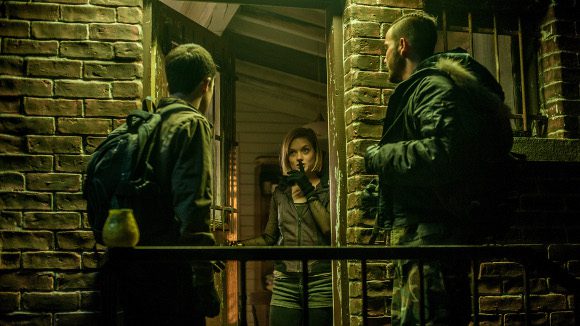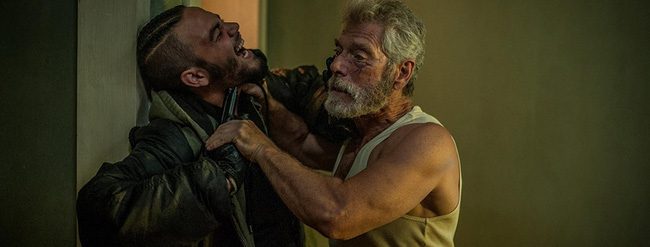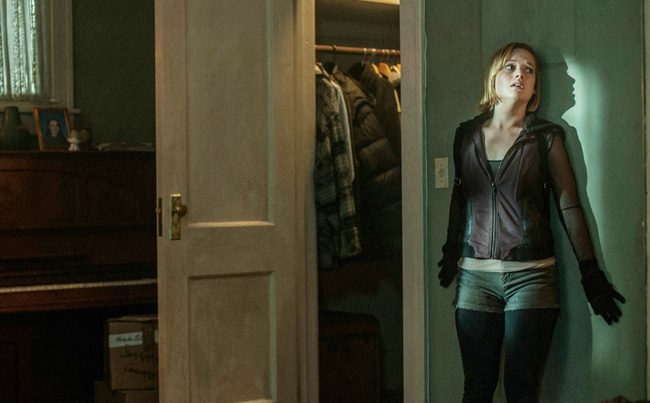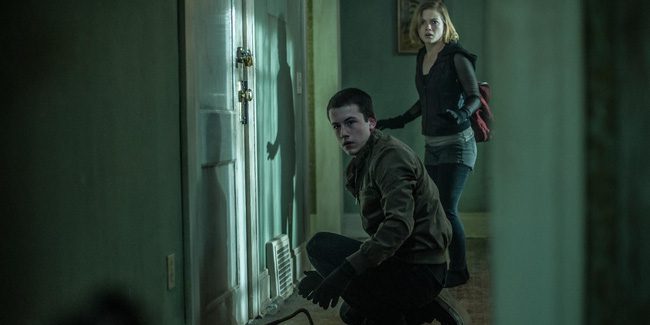2016 may have been a year of horror film drought, but in the realm of psychological thrillers, it was a year that birthed significant works with low production costs. While not relying on the overused “jump scare” techniques, Fede Alvarez’s Don’t Breathe stands out with its tense “close-up” shots and unpredictable plot, reminiscent of Wes Craven’s filmmaking style from the 70s.
Key Themes and Darkness – When the Protagonist is the Villain
With a limited cast of characters and confined spaces, Don’t Breathe poses a significant question for viewers: “Who is really the protagonist of this story?”
The plot centers around three young adults struggling to survive in Detroit, who, despite their bleak circumstances, still hope for a better future. They devise a plan to break into the home of a wealthy blind man, thinking it will be an easy target. However, the final act turns out to be a nightmare as the trio decides to invade the home of a seemingly defenseless man, leading to unexpected and violent consequences. No one is deemed completely innocent, and anyone can become a victim at any moment.
The content of Don’t Breathe does not follow the typical path of horror films or the cliché of ghosts haunting the protagonists. Director Fede Alvarez’s decision to have Jane Levy return after the success of Evil Dead is a brilliant choice, as her performance as Rocky breaks away from the usual “damsel in distress” portrayal often seen in horror films. With a difficult background (abusive relationships, poverty, drug addiction), Rocky’s character is driven to survive, pushing her to make drastic decisions.
Accompanying Rocky are Money, her street-smart partner, and Alex, the friend zoned guy. Teen actor Dylan Minnette, who plays Alex, holds his own against the seasoned cast during intense moments, portraying his character’s confusion and desperation effectively.
How could they not be terrified when the trio comes face to face with Stephen Lang, the actor known for his role as a military character in Avatar? At 64 years old, Lang’s portrayal of the blind man is crucial to the film’s tension. While the three intruders are portrayed as reckless, Lang’s character embodies a man driven by survival instincts and deep-rooted trauma.
As the chase unfolds in the darkened house, we learn more about this enigmatic character. From the perspective of a blind man (a home with a basement and a dog guarding the entrance), the film showcases his “survival tactics” against the intruders. At the same time, his concealment of secrets forces the audience to grapple with moral questions surrounding the characters’ fates.
Minimal “Jump Scare” Yet Gripping
If you’ve ever been startled by a scene where the main character is caught off guard in a dark corridor, Don’t Breathe employs this technique effectively. It expertly builds tension without relying heavily on jump scares, a common trope in many contemporary horror films. Though the film may lack an abundance of jump scares, it nonetheless keeps viewers on the edge of their seats.
The film’s atmosphere creates a sense of claustrophobia, danger, and impending violence. From the characters’ close encounters with death to the tension-filled moments as they navigate the dark corners of the house, Don’t Breathe effectively immerses viewers in this psychological thriller. Alvarez’s masterful direction transforms the house into a labyrinth of horror, showcasing the characters’ vulnerabilities and struggles for survival.
With cinematography by Pedro Luque, the film’s dark and moody aesthetic accentuates the unfolding tension and danger lurking at every turn, amplifying the sensation of dread that envelops the audience. The relentless sound design adds to the tension, making every creak and whisper feel significant and heightening the viewer’s involvement in the characters’ terrifying journey.
The film’s pacing doesn’t allow Don’t Breathe to delve deeper into the ethical dilemmas it raises, nor does it shy away from the characters’ complexities. Director Fede Alvarez does not give viewers the chance to fully understand the motivations behind the characters’ actions, creating a sense of unease that lingers throughout the film.
In conclusion, if a film can conjure visceral emotions and leave audiences questioning their own moral standings, Don’t Breathe is a masterclass in psychological horror. Despite its low budget of around $10 million and being set primarily in a single home, Don’t Breathe stands out as a unique piece of cinematic storytelling that should not be missed this season.

























